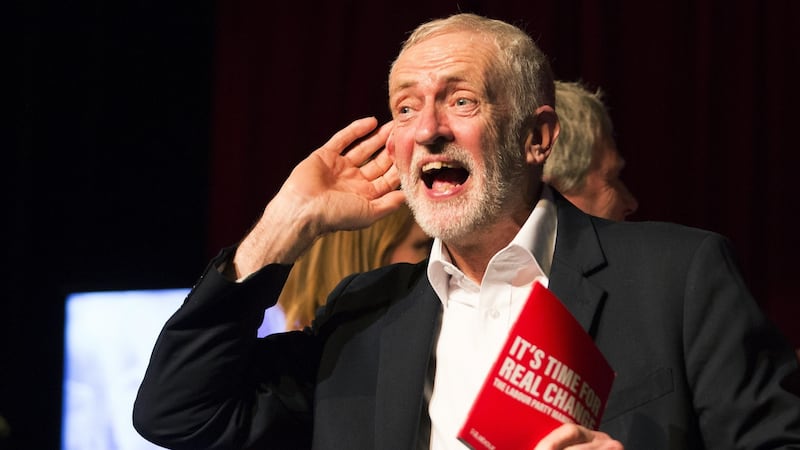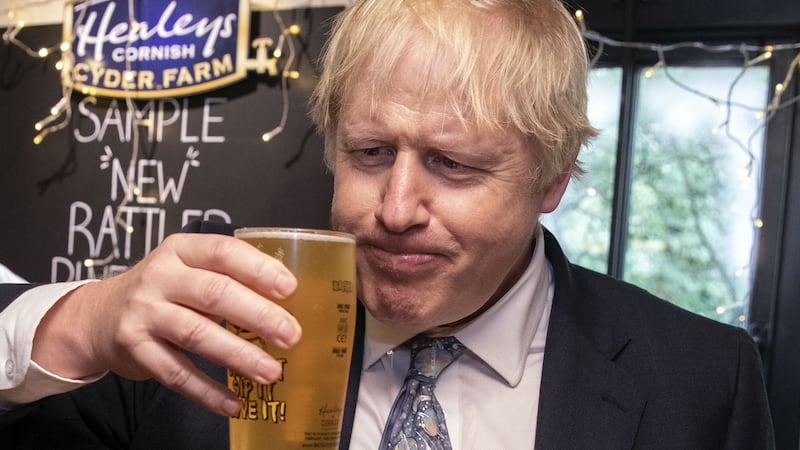Brexit is on a break. But immediately after the general election, Brexit will be back and for the Irish economy – for jobs, living standards and growth – what happens will be vital. Here are the three key dates in 2020 and the vital importance they will have for us.
January 31st, 2020
If Boris Johnson wins, with a majority in the House of Commons, there is a good chance that this will actually be the day the UK leaves the EU. For this to happen, the House of Commons will have to pass the withdrawal agreement and some associated legislation. It will be tight, time wise, but possible if Johnson gets a majority.


If Johnson is faced with forming a minority government, then it all gets trickier. For example, the DUP object to the withdrawal agreement's provisions on Northern Ireland and would be unlikely to support Johnson returning to Number 10 unless he commits to change this. And with no other way forward agreed with the EU, it is not clear how this would happen.
If Jeremy Corbyn defies the current opinion polls and wins, then he has promised to renegotiate the withdrawal agreement and put it to the people in a confirmatory referendum, also giving them a " remain" option. The Labour manifesto suggests he will seek to include a firm commitment on workers' rights and future alignment with the EU trading block.
Some of this might require change in the withdrawal agreement, but much would be a matter for the accompanying political declaration,the non-binding indicator of where both sides want to to in future talks.
The EU is seen as likely to accommodate a Corbyn-led government by extending the January 31st deadline to allow negotiations on this.
It remains to be seen whether the electorate is more attracted by Johnson’s promise to “ get Brexit done.” If he gets a majority and the withdrawal agreement passes, it removes one key source of risk to the Irish economy – a “no-deal Brexit.”
This kind of Brexit would cause huge disruption, the immediate erection of trade barriers and,sooner or later, controls at the Irish Border.
If the withdrawal agreement is concluded, the UK would enter what is called a transition period – known in the UK as the implementation period – when not much changes ,as further talks take place on the future relationship.
A no-deal exit has been estimated to cost some 2.5 to 3 per cent off GDP growth in the first year and eventually lead to a loss of 50,000 jobs, compared to what would otherwise happen. If this is avoided, however,the outlook for the economy is for continued strong growth in 2020.
Another kind of “ no-deal” Brexit could threaten at the end of 2020 if talks on a future relationship are not successful. Of which more below.
June 30th, 2020
This will be a big focus if the withdrawal agreement passes and the UK leaves on January 31st. Under the agreement, the UK enters a transition period – often referred to in the UK as an “ implementation period” – after it leaves the EU. This is due to end on December 31st, 2020, but there is scope to extend it, once, either by one year, or by two. In other words the transition could last until the end of 2021 or the end of 2022.
The UK must ask for such an extension and while Corbyn has said that this will happen and that a no-deal type exit must be avoided at all cost, Johnson’s manifesto has said, explicitly, that there will be no requests made for an extension. The importance of the end-June date is that , under the agreement, any extension must be agreed by this date.
For the Irish economy , if the June 30th deadline passes without a request for an extension, then it sets up a period of significant uncertainty to see if a deal can be done by the end-December deadline, with likely implications for consumer and business confidence.
The vast majority of trade experts say that a full-scale trade deal between the EU and UK would be impossible to negotiate before the end of 2020 – a full deal would likely take three of four years. So if June 30th passes with no extension, we will be in for six months of drama as a new deadline approaches.
Could some way be found to extend the transition at a date later than June 30th? This has been the subject of a lot of debate among legal and trade experts – but it would not be easy and might not even be possible.
Why is the UK so opposed to an extension? Because it would delay the date of leaving the EU trading regime. The UK also remains under the jurisdiction of the EU courts. Extending transition would also be likely met with an EU demand for continued UK contributions to its budget. It all ends up to what the Breixteers call an extension of “vassalage”.
December 31st, 2020
If the withdrawal agreement is voted through, this is the date the transition period is due to end. However what happens then? The idea is that the EU and UK would have a new trade deal completed and that this could be implemented as the UK leaves the transition phase – but the timeline seems impossibly short for negotiations. So the risk is of another crisis heading up to another deadline and the possibility of the UK leaving with no new trade deal done.
Boris Johnson has said he wants a free trade agreement with the EU along the lines of the one between the EU and Canada, though offering even better access for UK companies than Canadian ones get.
But his other stated goal – to diverge from EU rules and do new deals with other countries, including the US– may make this impossible. The EU won’t do a generous deal with a country sitting on its borders which is free to cut standards and regulations in areas like workers’ rights, the environment and so on. So we will be hearing a lot about EU demands that the UK agrees to “level playing field” provisions in these areas as part of any new deal.
It might be possible for the two sides to reach what is being referred to as a “bare-bones” trade deal in time – one just covering the basics of allowing goods to move without tariffs or quotas applying. But this is a long way short of what applies now and border regulatory checks with still be needed, providing significant barriers to trade. And there would be hurdles to jump just to get that far – agreement on fisheries could be fractious, there are the level playing field issues mentioned above and who knows what attitude the UK would take.
In the long term, both sides would want a much wider deal, including the vital areas of services, mutual access to data, and so on. But unlike a bare-bones deal, this kind of wider agreement would be likely to require approval from each member state – and in any case would by its nature take much longer to negotiate.
So, predictably, this is messy. There is a risk that a deal is not reached, no transition is agreed and on January 1st 2021 the UK lapses into trading with the EU as a third country with no new trade deal – with tariffs as set down in WTO schedules applying.
It is important to understand where this is similar – and where it differs – to what we have been referring to as a “no-deal Brexit” over the past year, which is leaving without a withdrawal agreement.
The impact on UK/EU trade is similar – with tariffs and regulatory barriers applies in goods and services as set down in WTO schedules. This would be a big issue for areas like the food industry and would also push up prices in the shops here.
The UK’s financial bill for leaving the EU is a matter for the withdrawal agreement, so this would remain in the event of an exit without a trade deal at end 2020. Some limited measures which had been agreed to apply in areas like aviation in the event of the withdrawal agreement not being finalised might be replicated in the event of no future trade deal – though we don’t know.
And the measures applying to Northern Ireland agreed in the talks between Johnson and the EU would also apply – as these are also part of the withdrawal agreement.
So a UK exit at the end of 2020 without a new trade deal would not require new controls at the Irish border. However, the pressure on the new arrangements on trade between the North and Britain would be greater than they would be were some kind of trade deal to be done – as there would be more to check.
The prospects of the UK and EU negotiating a trade deal at a later date would remain , but were the UK to put more of its efforts into doing a deal with US this would make it all the more difficult.
The bottom line
So the bottom line for Ireland is that the two types of “no-deal” Brexit remain the big risks in 2020. If, perhaps in a hung parliament, the UK were to leave without concluding a withdrawal agreement, this would be a big economic hit to trade and also cause immediate problems on the Irish border. If this hurdle is overcome, the risk remains of a departure without a new trade deal at the end of 2020.
In a third scenario, were the UK to leave with just a bare-bones deal, this would remove the threat of tariffs – a big issue for food, in particular – but would mean checks on trade with the UK and new barriers in what would still be a hardish version of Brexit, albeit not a catastrophic crash-out.
Smart Money is a weekly online column looking at the big economic issues and what they mean






